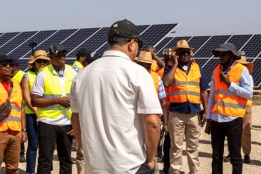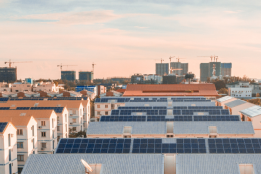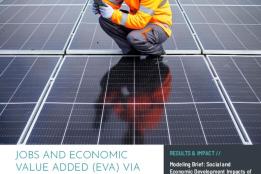In many countries, energy access marks the line between survival and opportunity. CIF’s Scaling Up Renewable Energy Program (SREP) was built on that premise, and today, new modeling underscores its broader social and economic contributions.
SREP has mobilized $591 million in CIF concessional finance, unlocking nearly $4 billion in co-financing from governments, multilateral development banks (MDBs), the private sector, and bilateral partners. The program accelerates renewable energy deployment in low-income countries, with benefits increasingly measured in terms of employment and economic value.
Estimates from CIF’s Social and Economic Development Impacts of Climate Investments (SEDICI) initiative show that the SREP portfolio has supported approximately 830,785 person-years of employment as of December 2024.
The modeling reveals a layered employment impact across the energy investment chain:
- Direct jobs, such as construction and operations, account for 354,000 person-years*, with women representing 12 percent.
- Supply chain jobs, from manufacturing to logistics, added 220,000 person-years, with 34 percent held by women and just over a quarter considered formal.
- Induced jobs, created through broader economic activity, contribute about 155,000 person-years, with 41 percent going to women.
- Improved electricity access drives 102,000 additional jobs in shops, farms, clinics, and enterprises, where women hold nearly half, though most remain informal.
The data shows how employment extends beyond core infrastructure, reaching downstream enterprises and households. Notably, women’s participation rises significantly, pointing to energy access as a key enabler of inclusive labor force engagement.
To assess macroeconomic benefits, CIF applied the Joint Impact Model (JIM), an input–output model that quantifies the direct, indirect, and induced effects of infrastructure investments. The model estimates that SREP has generated $3.5 billion in economic value added:
- Direct value: $1.9 billion
- Supply chain value: $1.2 billion
- Forward effects of energy access: $345 million
The analysis demonstrates that SREP delivers significant economic returns, creating value through targeted investment, supply chains, and energy-enabled productivity. These insights help shift climate finance conversations from “what does it cost?” to “what does it achieve at what cost?” As CIF deepens its partnerships, tools like SEDICI and the Joint Impact Model remain essential to maximizing the value of clean energy transformations that also generate social and economic development outcomes.
* Person-year: Represents one person working full-time for a year, or two people for half a year. Used for both temporary employment in manufacturing, installation, and construction, as well as permanent jobs.




